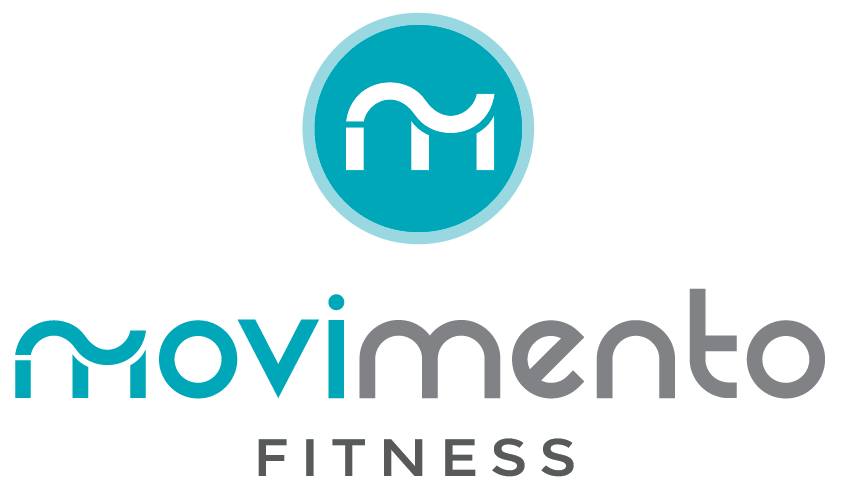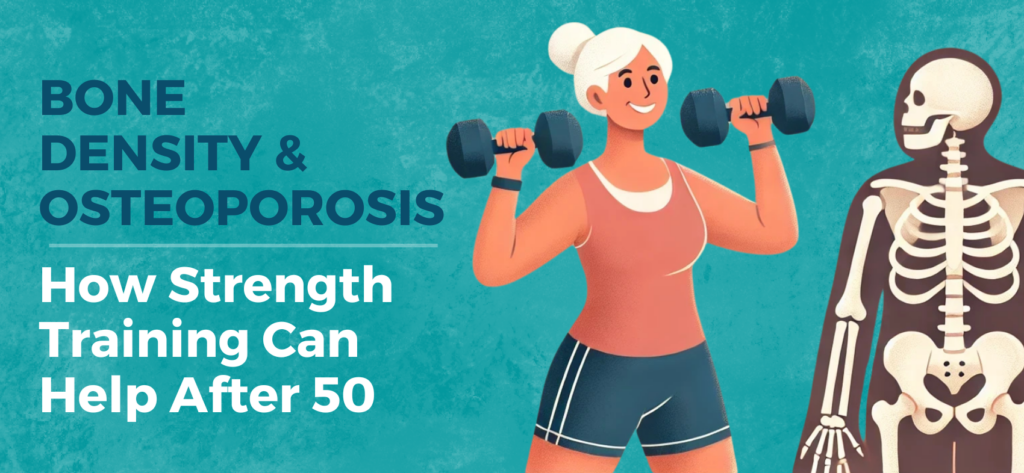Most people don’t think about their bones until there’s a problem—a fracture, a fall, or a sudden loss of mobility. But just like your muscles, your bones need regular care to stay strong.
Many believe that bone loss is inevitable with age, but what if you could slow it down, stop it, or even reverse it? What can you do to maintain strong, resilient bones well into your 50s and beyond?
What Is Bone Density, and How Does It Change With Age?
Bone density refers to how much mineral content, like calcium, is packed into your bones. Think of your bones as a living structure that constantly rebuilds itself. When you’re young, your body produces new bone faster than it breaks down old bone, making your bones stronger.
However, after about age 30, this process slows down. Around menopause for women, or around age 60 to 65 for men, bone breakdown starts outpacing bone formation. This gradual loss of bone density makes bones weaker, increasing the risk of fractures and osteoporosis.
What Is Osteoporosis?
Osteoporosis literally means “porous bone.” It’s a condition where bones become brittle and fragile because they’ve lost too much density. Imagine a strong, dense sponge versus a delicate, hole-filled one—that’s the difference between healthy bone and osteoporotic bone.
A loss in bone density officially becomes diagnosed as osteoporosis when a person’s bone mineral density (BMD) falls to 2.5 standard deviations or more below the average BMD of a healthy young adult. This measurement is typically assessed through a DEXA scan, which helps determine whether a person has normal bone mass, low bone mass (osteopenia), or osteoporosis.
The problem?
Osteoporosis is often called a “silent disease” because you won’t feel it happening. Many people don’t realize they have it until they suffer a fracture—often in the hip, spine, or wrist.
Osteoporosis is more common in women than men. Women have smaller, thinner bones, and after menopause, the drop in estrogen accelerates bone loss.
Why Is Bone Loss a Big Deal?
Losing bone density has far-reaching consequences:
Increased risk (and frequency) of fractures
Broken bones lead to hospitalizations, surgeries, and long recovery periods.
Loss of mobility and independence
Weak bones make everyday tasks harder, increasing fall risks. Everyday activities such as walking, climbing stairs, or even standing for extended periods can become challenging, leading to a more sedentary lifestyle. This inactivity further weakens bones and muscles, creating a cycle of declining strength and increased dependence on others for simple life tasks.
Chronic pain and height loss
Spinal fractures can cause a hunched posture (kyphosis), leading to back pain and difficulty moving. Hip fractures, in particular, can result in long-term chronic pain, decreased mobility, and a significantly reduced quality of life.
Increased mortality risks
Hip fractures and severe osteoporosis-related fractures are associated with higher mortality rates, especially in adults over the age of 65.
What Do the Numbers Say?
Here are some staggering statistics from the International Osteoporosis Foundation that highlight why maintaining bone health should be a priority as we age.
Using the WHO definition of osteoporosis, the disease affects approximately 6.3% of men over the age of 50 and 21.2% of women over the same age range globally. Based on the world population of men and women, this suggests that approximately 500 million men and women worldwide may be affected
Worldwide, estimates show 1 in 3 women and 1 in 5 men over age 50 will experience osteoporotic fractures – with hip and spinal fractures being most common and problematic.
Up to 37 million fragility fractures occur annually in individuals aged over 55 worldwide, the equivalent of 70 fractures per minute!
Hip fractures have reported mortality rates up 24% in the first year following the fracture, and greater risk of dying for at least 5 years afterwards. Loss of function and independence among survivors is profound, with 40% unable to walk independently, 60% requiring assistance a year later. Because of these losses, 33% are totally dependent or in a nursing home in the year following a hip fracture.
Vertebral fractures are associated with an 8x increase in age-adjusted mortality
What Increases Your Risk of Bone Loss & Osteoporosis?
UNCONTROLLABLE RISK FACTORS
- Age – Bone loss accelerates after 50.
- Gender – Women are at a higher risk.
- Family history – If your parents had osteoporosis, your risk increases.
LIFESTYLE FACTORS
- Lack of weight-bearing exercise – If you don’t challenge your bones, they weaken.
- Low calcium & vitamin D intake – Your body needs these nutrients for strong bones.
- Smoking & excessive alcohol consumption – Both accelerate bone loss.
- Being underweight and/or inactive – Muscle and bone strength go hand in hand.
How Can You Reduce Your Risk?
The good news? You can take action to slow or prevent bone loss:
- Eat enough calcium and vitamin D. Get these from food, supplements, or sun exposure.
- Quit smoking and limit alcohol. These lifestyle choices weaken bones.
- Get a bone density scan (DEXA scan). This simple test helps monitor your bone health.
- Start strength training! (More on this below…)
Can Strength Training Improve Bone Density After 50?
Yes!
Strength training is one of the most effective ways to IMPROVE bone density!
Why?
Because when you lift weights or do resistance exercises, your muscles pull on your bones, creating stress that signals bone-building cells (called osteoblasts) to become more active. This mechanical stress enhances bone remodeling, where old bone is broken down and new bone is formed, ultimately increasing bone mass and strength over time.
Additionally, strength training improves muscle mass and balance, reducing the risk of falls and fractures, which is crucial for maintaining independence as you age.
But I Already Walk, Garden, Bike, Swim, Golf and/or Play Pickleball, etc...
Unfortunately, not all forms of exercise provide the same bone-strengthening benefits. While walking, jogging, and dancing are excellent weight-bearing exercises that help slow bone loss, they do not stimulate bone growth as effectively as resistance training.
And activities like swimming and cycling, although great for cardiovascular health, are not weight-bearing and do not contribute significantly to bone density improvements.
Strength training, especially progressive resistance exercises, applies direct mechanical loading to bones, prompting them to adapt and become stronger, which is crucial in preventing osteoporosis-related fractures.
What Are Progressive Resistance Exercises???
Progressive resistance exercises refer to strength training exercises where the amount of resistance – provided through free weights, weight machines, and/or resistance bands – gradually increases over time.
This method ensures that muscles and bones are continuously challenged, prompting them to adapt and grow stronger. Essentially, instead of lifting the same weight repeatedly, you progressively add more resistance to stimulate bone growth and improve strength.
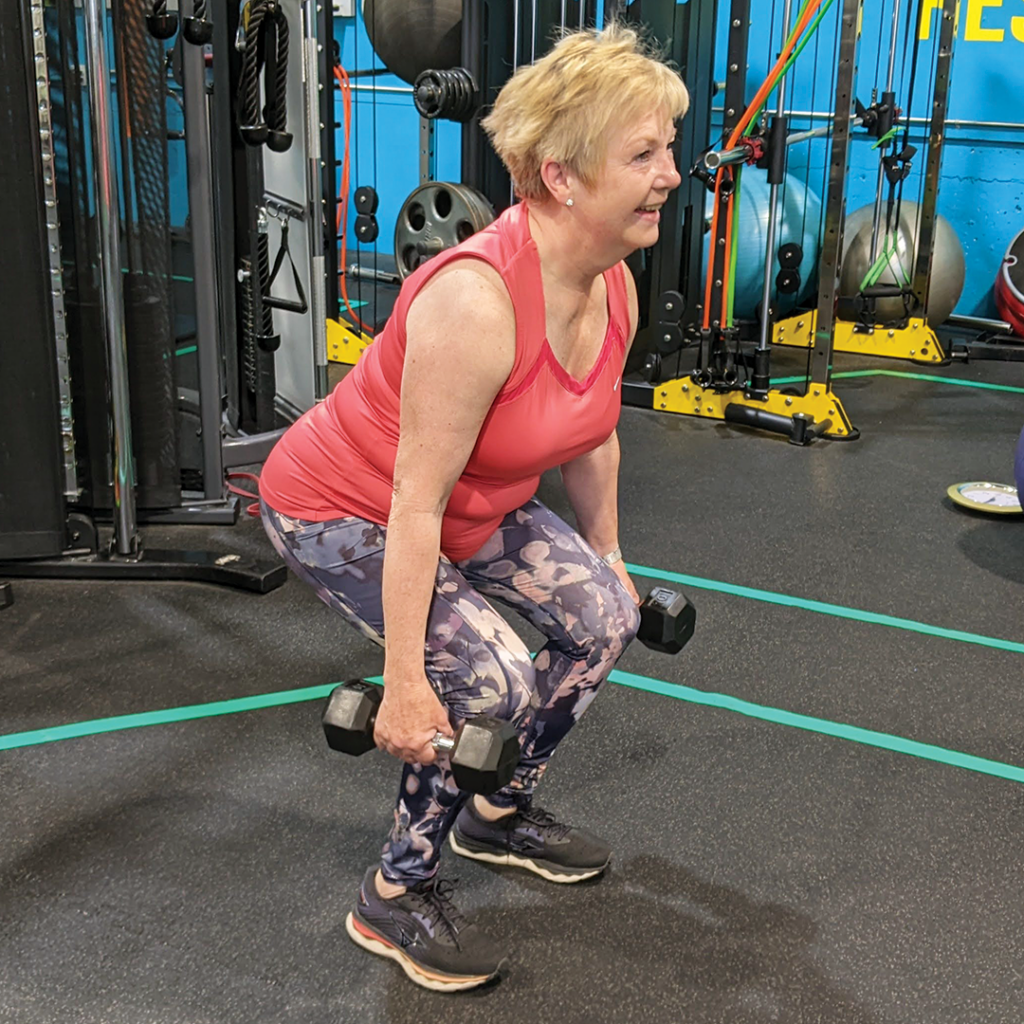
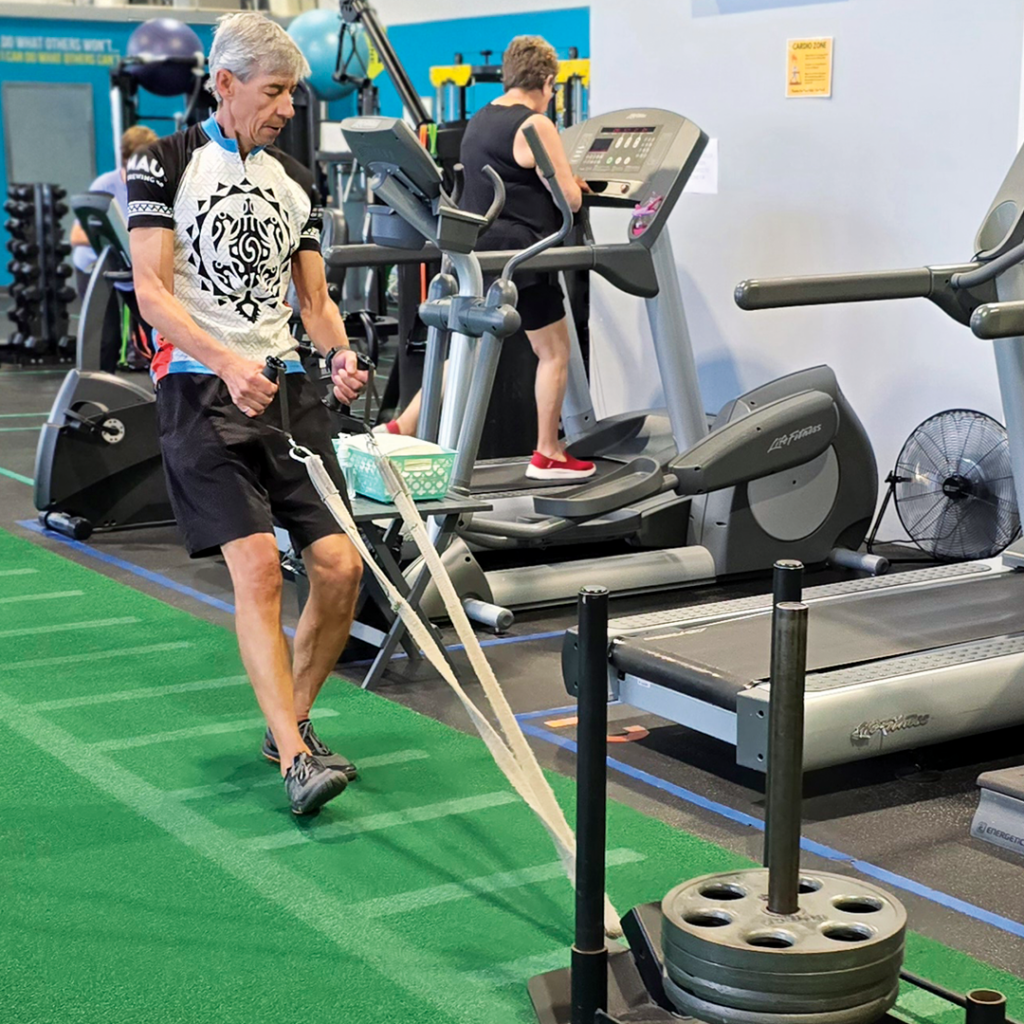
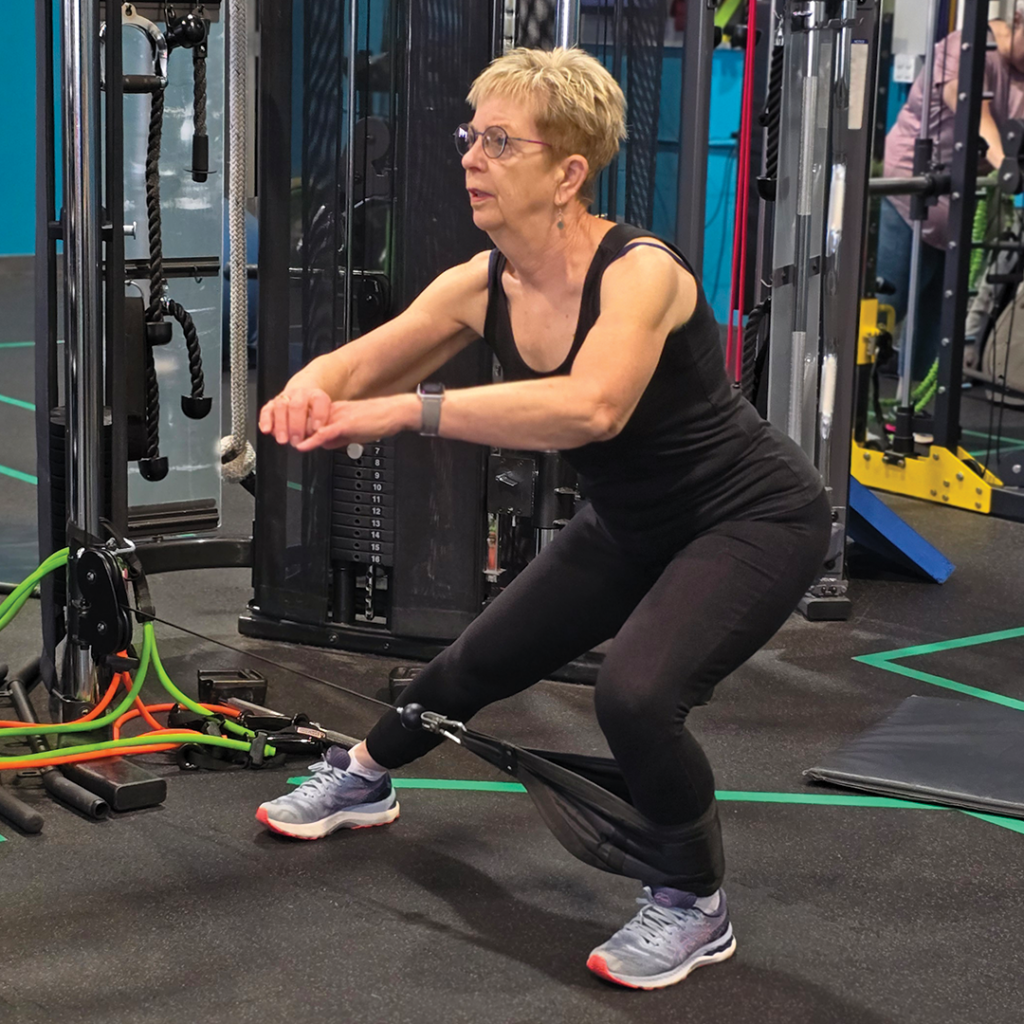
Bone loss doesn’t have to be inevitable. With strength training you can slow, stop, or even reverse bone loss after 50.
Stronger bones mean more freedom, mobility, and independence as you age.
Your Time is Now to Strengthen Your Bones
If you are over 50 and reading this thinking STRENGTH TRAINING!!? I have never done it (or have not done it in years) and it’s TOO LATE FOR ME…
Hold that thought.
Studies show that even beginners over the age of 50 can gradually strengthen bones reducing the risk of fractures, build muscle strength and improve their balance with consistent resistance training. As long as you begin with manageable exercises and progress slowly to allow the body to adapt safely and effectively.
Here at Movimento Fitness we specialize in custom strength training for those 50+. Your programs are designed completely around your fitness level and your needs. Under the guidance of our coaching team you are able to safely perform progressive resistance exercises where we can gradually and safely increase the amount of resistance to get the bone density building benefits you need.
